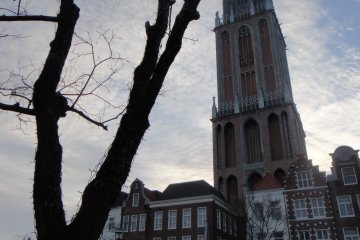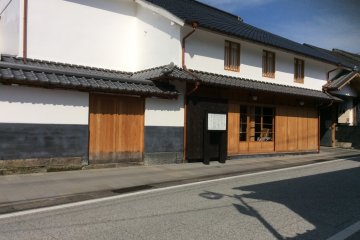In Nagasaki, there is a stylish Western house high up on a cliff in Minami Yamate, commanding a panoramic view of Nagasaki Port. The original owner of this house was a Scottish trader, Thomas Blake Glover. He played a key role in the Nagasaki settlement during the mid 19th century. Some other Western houses built from the same age were reconstructed beside his house, and today, they are all part of what is called “Glover Garden”.
Glover House
Glover House is the oldest wooden building with a Western design in Japan. It was built in 1863. The octagonal, spacious, stone-floored veranda connects directly to the inside corridor and was designed by Glover himself. He didn’t want just one front door so that during parties people could come in and out of the house freely. The carpenter was a Japanese master builder, Shu (or Hidenoshin) Koyama. At that time he had no experience building Western houses. But he did research, collected various ideas, and finally completed the novel house.
The gentle slope of the front garden leads up to a 300-year-old hemp palm. As you enter the house, an oil painting done by Glover, and Glover’s suitcase and walking stick are displayed in the guest room. You might also find a hidden room in the attic. This hidden room is thought to be where clandestine meetings took place among local samurai who were eager to overthrow the Shogunate. Glover secretly supported these people.
T.B. Glover
Glover was born in Fraserburgh, Scotland in 1838 and came to Japan in 1859, with a dream to succeed in the trading business. Among the other foreign traders, he was immediately respected. After gaining the rights to be the Nagasaki agent for Jardin Matheson Holdings (a top British trading company in the Far East), he established his own company (Glover Trading Co.) in 1862. The following year, Glover built this fantastic residence in Minami Yamate.
Glover and the Anti-Shogunate Samurai
In 1863, Glover supported the Choshu 5 (five leading rebels from Yamaguchi Prefecture) in a trip abroad, even though overseas travel was strictly forbidden by Japanese law at the time. The purpose of their trip was to study in the U.K. so as to learn English and to gain knowledge of the ways of advanced countries. Glover asked William Keswick (the founder of Jardine Matheson Holdings) to help, and Matheson’s took care of them during their stay. Ten years later, the Choshu 5 played an active role in the newly established Meiji government. Their gratitude to Glover continued into their later years.
Glover’s success and bankruptcy
From 1866 to 1868, Glover energetically expanded his trading business and eventually began to invest in coalmine development, and slip dock construction. At the same time, he opened branch offices in Shanghai, Yokohama, Osaka, and Kobe, one after another. The rapid expansion of the company tied up his liquid assets and led to financial difficulties. In addition, Glover himself was overly optimistic, sloppy in his accounting practices, and he invested too much of his time in Japanese political issues. As a result, Glover’s company went bankrupt in 1871. Glover continued to work at the coalmine in Nagasaki. His personal debts were cleared around 1874.
Life in Tokyo
In 1876, Glover moved to Tokyo as a business advisor to Mitsubishi, accompanied by his wife, Tsuru, and kids (Hana and Tomisaburo). In 1883, the Japanese government established the Rokumei-kan: a social club (designed by British architect, Josiah Conder) where foreign and Japanese VIPs could mix; aiding in the push for modernization. Glover, who had an enormous influence on foreign society in Japan and who was also considered to be a reliable person from both the Western and Japanese sides, was requested to be a secretary.
In 1885, Glover took over a brewery in Yokohama and became the president in 1891. This brewery eventually became Kirin (Beer) Holdings.
From around 1897, Glover often visited Nikko where he loved to go fishing. He built a lakeside house for his pleasure. He seemed to have a quiet time there in his later life. He died from a kidney disorder in 1911, three years after being decorated by the Japanese government for his longtime and outstanding service to Japan.
The old Mitsubishi Second Dock house in the Glover Garden commands a gorgeous view of Nagasaki Port. Glover must have had some big dreams when he was standing there. Later in life, he must have been proud of the fact that both foreigners and Japanese admired him as a nongovernment diplomat. When you stand on the veranda in this dock house and see this panoramic view, you might feel Glover’s ambitions and dreams as well.



















